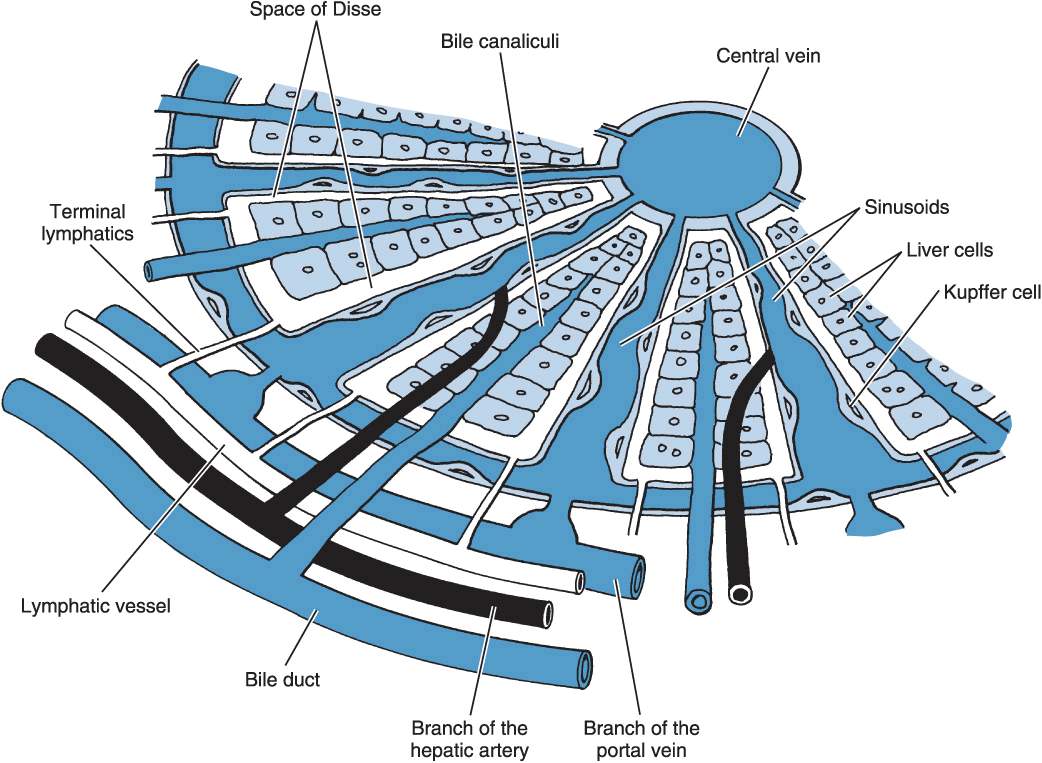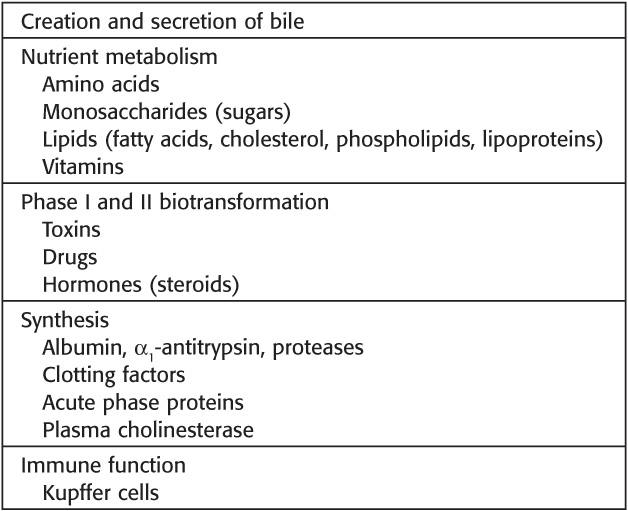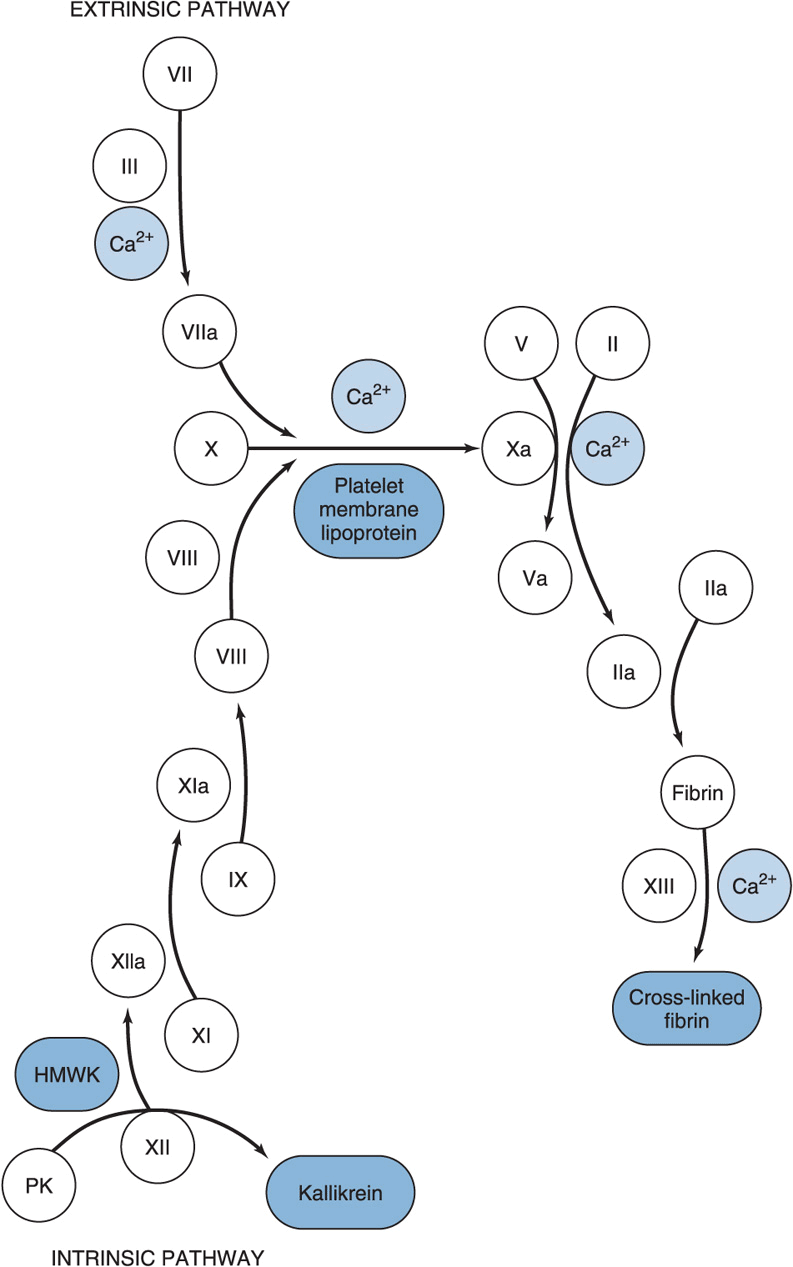(Modified and reproduced, with permission, from Guyton AC: Textbook of Medical Physiology, 7th ed. W.B. Saunders, 1986.)
Liver lobules: Composed of plates of hepatocytes arranged cylindrically around a centrilobar vein. Four to five portal tracts, composed of hepatic arterioles, portal venules, bile canaliculi, lymphatics, and nerves, surround each lobule.


Coagulation factors: All produced by the liver except factor VIII and von Willebrand factor

Drug Metabolism
• Phase I reactions: Modify chemicals typically through cytochrome P-450 enzyme systems, resulting in oxidation, reduction, deamination, sulfoxidation, dealkylation, or methylation. Barbiturates and benzodiazepines are inactivated this way.
• Phase II reactions: Involve conjugation of the substance with glucuronide, sulfate, taurine, or glycine. The conjugated compound can then be readily eliminated in urine or bile.
• Induction and inhibition: Cytochrome P-450 can be induced by some drugs (e.g., ethanol, barbiturates) to result in increased tolerance to the drug’s effects. Conversely, some drugs (e.g., cimetidine, chloramphenicol) can prolong effects of other drugs by inhibiting these enzyme systems.
• Hormones: Thyroid function depends on hepatic formation of the more active triiodothyronine (T3) from thyroxine (T4). Degradation of thyroid hormone is principally hepatic. The liver is also the major site of degradation for insulin, steroid hormones (estrogen, aldosterone, and cortisol), glucagon, and antidiuretic hormone.
• Vitamins: Principal storage sites for vitamins A, B12, E, D, and K.
• Proteins: Hepatic production of transferrin and haptoglobin is important because these proteins are involved in iron hemostasis; ceruloplasmin is important in copper regulation.

Full access? Get Clinical Tree





